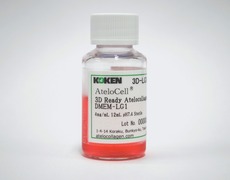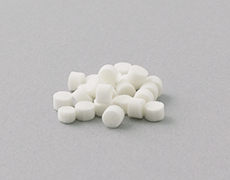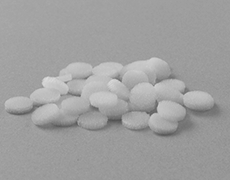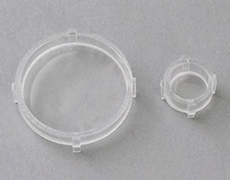Resources
Categories
Will in vitro 3D culture models replace in vivo experiments?

In vitro 3D culture model creation using 3D culture and co-culture
In recent years, with advances in stem cells, such as induced pluripotential stem (iPS) cells, culture technology, and the promotion of the 3Rs (Replacement, Reduction, and Refinement) in in vivo experiments, attention has been focused on cell cultures that are closer to in vivo conditions. As a method to achieve this, 3D culture with an increased thickness in height and co-culture, where two or more cell types are cultured at the same time, are expected to replace in vivo experiments. Having said that, many in vitro 3D culture models are still under development and are at the stage where they can replace in vivo experiments for certain limited test items. Further technological innovation through research is required.
Commercially available in vitro 3D culture model
Since the European directive on the regulation of in vivo experiments regarding cosmetics was promulgated in 2003, the demand for safety tests using 3D culture models consisting of cultured cells has been increasing as an alternative to in vivo experiments. Among the products already on the market, there are many skin and cornea models. Other commercially available models include oral cavity, airway, alveolar, small intestine, bladder, and vaginal models.
| Manufacturer | Summary of commercially available in vitro 3D culture models |
|---|---|
| Japan Tissue Engineering Co., Ltd. | ・LabCyte EPI-MODEL (epidermal model)
A model consisting of 3D keratinocytes cultured on a cell culture insert. It is listed in the OECD Test Guidelines (TG439) as a skin irritation test method. It can be used for skin permeability tests, percutaneous absorption tests, etc. A kit for making the same model is also available.
・LabCyte CORNEA-MODEL (cornea model) A model consisting of 3D corneal epithelial cells are 3D cultured on a cell culture insert. Listed in the OECD Test Guideline (TG492) as an eye irritation test method.
|
| Roman Industries Co., Ltd. | ・LSE-high, LSE-high young stratum corneum model (skin model):
A model consisting of 3D co-cultured keratinocytes and fibroblasts on a cell culture insert. Can be used for skin permeability testing. A dermal model is also available.
|
| Organ Technologies Inc. | ・Advanced Skin (skin model):
A model consisting of epidermal and dermal layers, which are the same as natural human skin. It can be used not only for safety testing but also for functional evaluations. They are also currently developing a next-generation skin model that includes skin appendages such as hair follicles and sebaceous glands.
|
| MatTek Corp (Domestic distributor: Kurashiki Boseki Co., Ltd.) |
・EpiDerm (epidermal model):
A model consisting of 3D keratinocytes cultured on a cell culture insert. It is listed in the OECD Test Guidelines (TG439, TG431) as a skin irritation test and skin corrosion test method. It can be used for skin permeability tests, phototoxicity tests, etc. There is a commentary video on how to use the model, and you can ask questions and make comments similar to an online seminar.
・MelanoDerm (epidermal model): A model consisting of 3D co-cultured keratinocytes and melanocytes on a cell culture insert. It can be used for the whitening test.
・EpiDermFT (skin model): A model consisting of 3D co-cultured keratinocytes and fibroblasts on a cell culture insert. It can be used for antiaging tests, wound healing research, etc.
・EpiOral (oral model): A model consisting of 3D cultured oral epithelial cells on a cell culture insert. It can be used for oral mucosal irritation and permeability tests.
・EpiOcular (corneal model): A model consisting of 3D culture epithelial cells on a cell insert. Listed in the OECD Test Guideline (TG492) as an eye irritation test method. In addition, MatTek sells corneal models made from corneal epithelial cells.
・Others : MatTek also sells disease models, such as melanoma and psoriasis models, as well as gum, respiratory tract, small intestine, and vaginal models.
|
| SkinEthic SA (Domestic distributor: Nikoderm Research Inc.) |
・EpiSkin (epidermal model):
A model consisting of 3D cultured keratinocytes on a collagen membrane. Listed in the OECD Test Guidelines (TG439, TG431) as a skin irritation test and skin corrosion test method. It can be used for phototoxicity tests, skin permeability tests, etc.
・SkinEthic RHE (epidermal model): A model consisting of 3D cultured keratinocytes on a cell culture insert. Listed in the OECD Test Guidelines (TG439, TG431) as a skin irritation test and skin corrosion test method. It can be used for phototoxicity tests, skin permeability tests, etc.
・SkinEthic RHPE (epidermal model): A model consisting of 3D cocultured keratinocytes and melanocytes on a cell culture insert. It can be used for whitening tests, phototoxicity tests, etc.
・T-Skin (skin model): A model consisting of 3D cocultured keratinocytes and fibroblasts on a cell culture insert. It can be used for phototoxicity tests, skin permeability tests, etc.
・SkinEthic HCE (corneal model): A model consisting of 3D cultured corneal epithelial cells on a cell culture insert. Listed in the OECD Test Guideline (TG492) as an eye irritation test method. It can also be used for bacterial adhesion tests, etc.
・Others : SkinEthic also sells oral, gum, and vaginal models.
|
| CellSystems Biotechnologie Vertrieb GmbH. | ・epiCS (epidermal model):
A model consisting of 3D cultured keratinocytes on a cell culture insert. It is listed in the OECD Test Guideline (TG431) as a skin corrosion test method. It is also scheduled to be included in the OECD Test Guideline (TG439) as a skin irritation test method.
・epiCS-M (epidermal model): A model consisting of 3D cocultured keratinocytes and melanocytes on a cell culture insert. It can be used for the whitening test.
|
| Sterlab SAS | ・Skin+ (epidermal model):
A model consisting of 3D cultured keratinocytes on a cell culture insert. It is scheduled to be included in the OECD Test Guidelines (TG439) as a skin irritation test method. It can also be used for skin corrosion tests.
・Human Pigmented Epidermis (epidermal model): A model consisting of 3D cocultured keratinocytes and melanocytes on a cell culture insert. It can be used for the whitening test.
・Human Full Thickness (skin model): A model consisting of 3D cocultured keratinocytes and fibroblasts on a cell culture insert.
・Human oral epithelium (oral cavity model): A model consisting of 3D cultured oral epithelial cells on a cell culture insert. It can be used for safety testing and functional evaluation.
・Human Gingival Epithelium (gingival model): A model consisting of 3D cultured gingival epithelial cells on a cell culture insert. It can be used for safety testing and functional evaluation.
・Others : Sterlab also sells a psoriasis disease model as well as dermal, alveolar, vaginal, and bladder models.
|
Please note: The above table has been compiled independently by us and may not reflect the latest information.
Various in vitro 3D culture models using collagen
As mentioned above, many commercially available in vitro 3D culture models cultivate cells in 3D using cell culture inserts as scaffolds. In addition, many scientific articles on model creation using collagen gels and sponges have been published. For example, various in vitro 3D co-culture models have been constructed that combine two or more cell types. For a vascular model, a collagen gel containing vascular smooth muscle cells was prepared, and vascular endothelial cells were placed on top of the collagen gel. For a cancer microenvironment model, cancer cells were seeded on the surface of an Atelocollagen Permeable Membrane, and fibroblasts were seeded on the back. These published papers indicate the need for in vitro experiments that mimic in vivo conditions, and it is expected that a variety of model systems will continue to be established in the future.
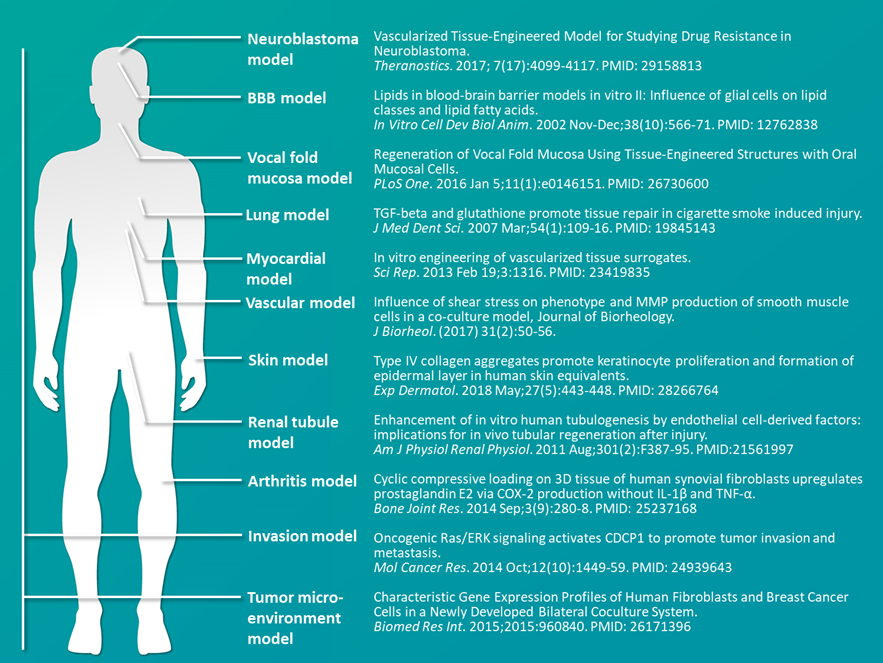
In recent years, techniques to produce organoids, which are artificially reconstructing tissues, have been established, and there have been instances where collagen gel is used to produce skin organ system organoids. The term organoid used here refers to a tissue consisting of multiple types of cells with characteristic organ functions, and it is different from a spheroid, which is simply an aggregation of cells.
Summary
Because of the technological advancements in the use of stem cells, such as iPS cells, culture, 3D culture, and co-culture, an increasing number of in vitro 3D culture models have reached a practical level. Regardless of whether collagen scaffolds are used, it is expected that 3D culture models of various tissues will continue to be released on the market.
